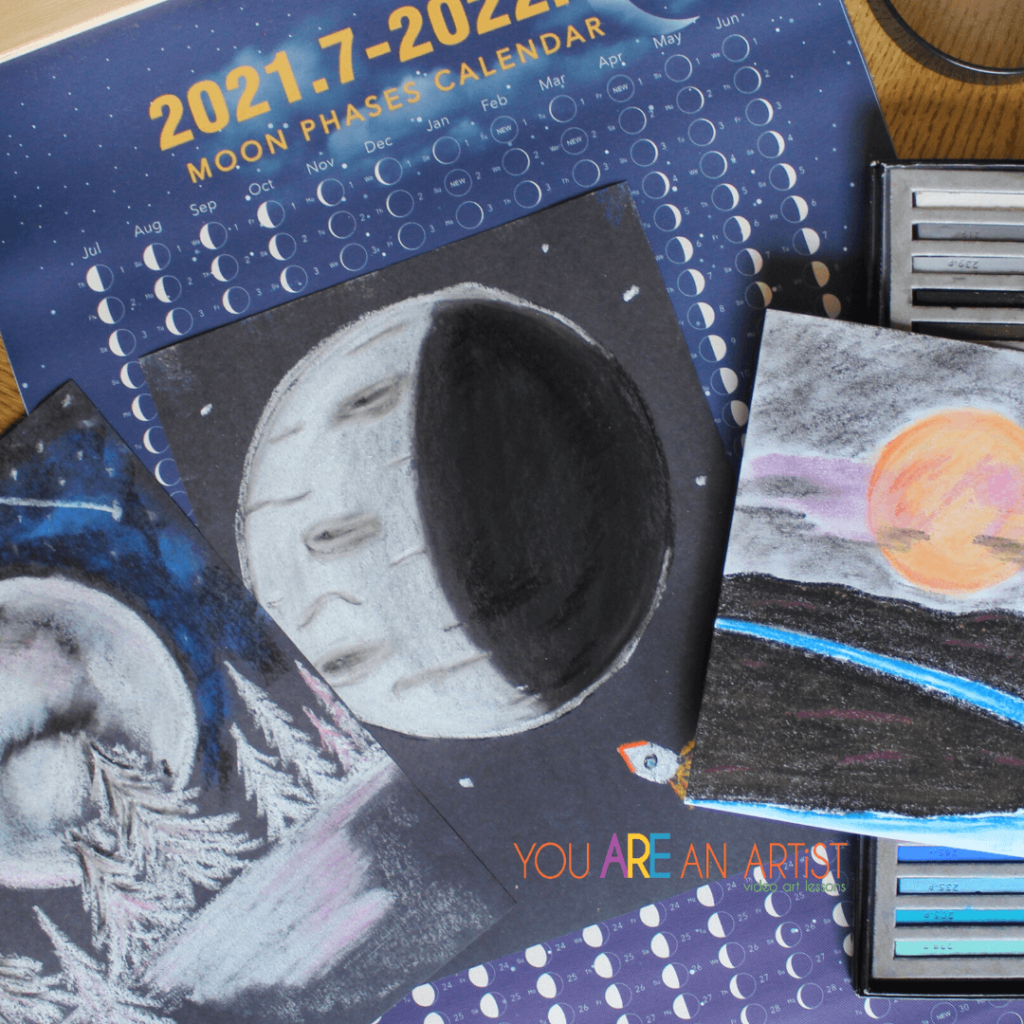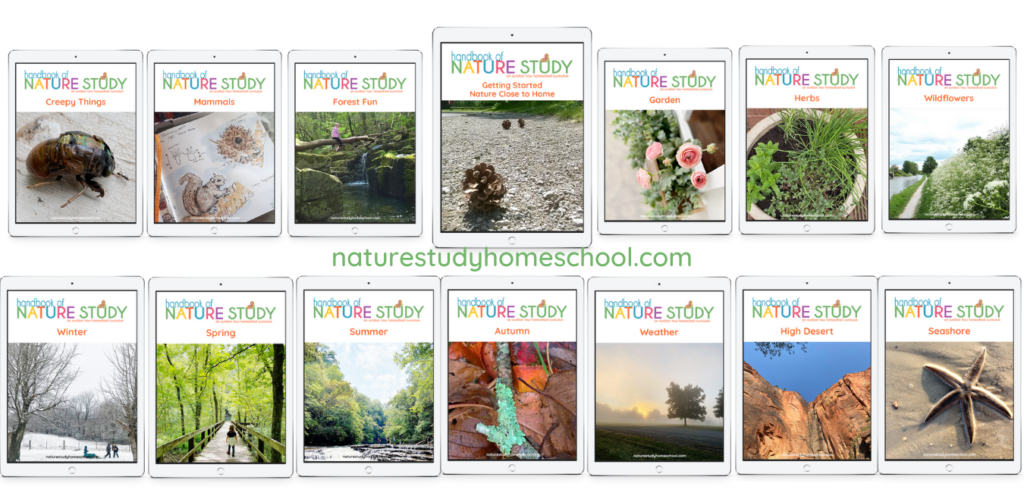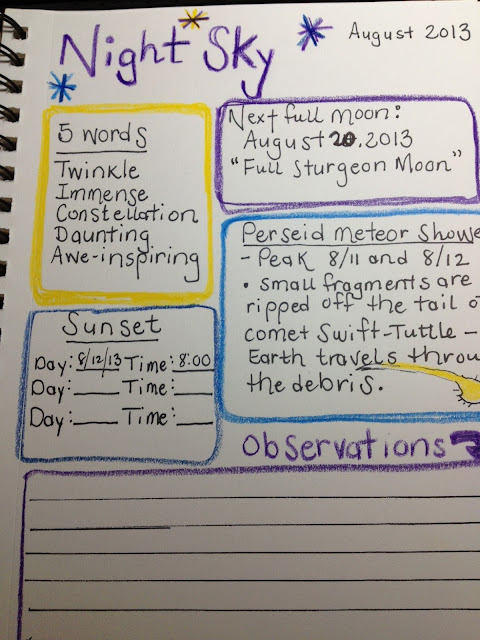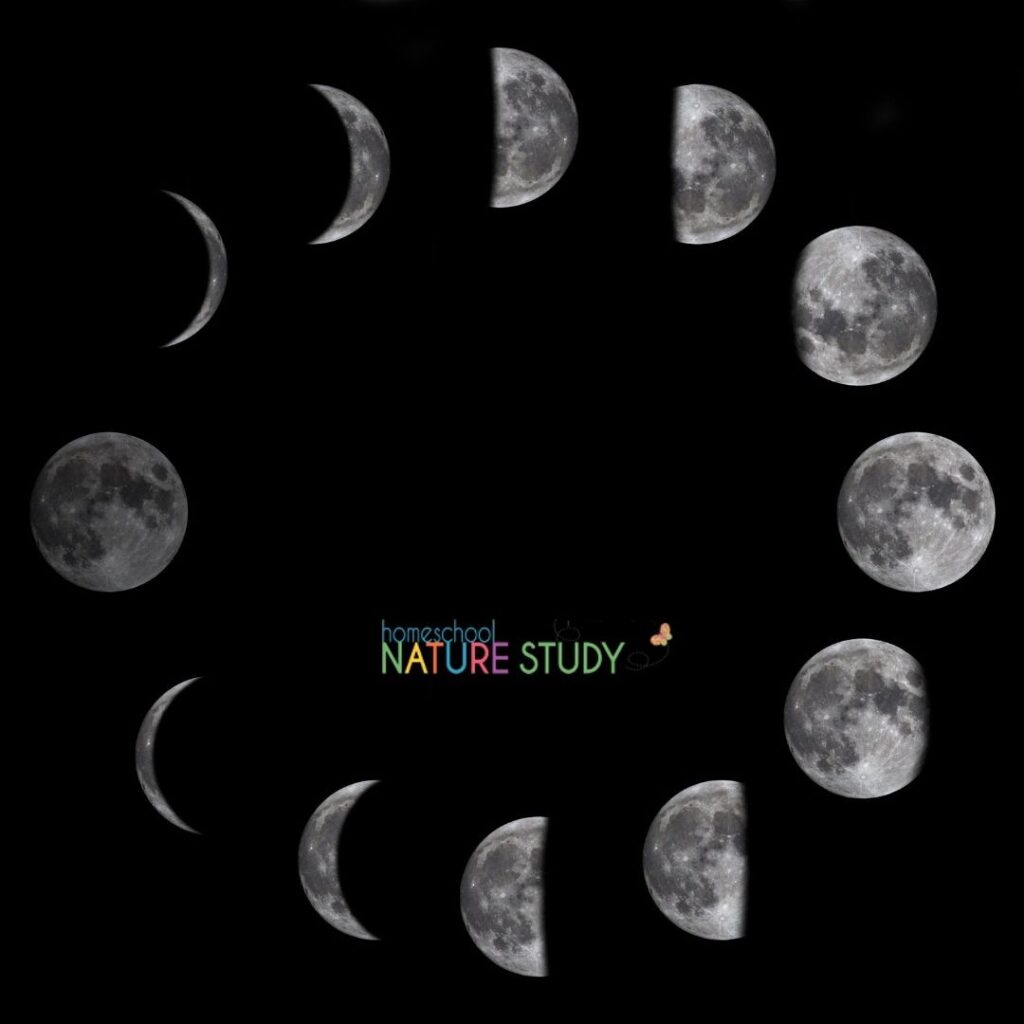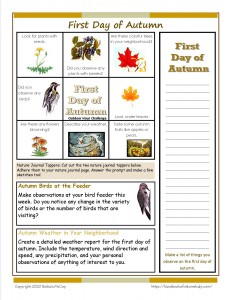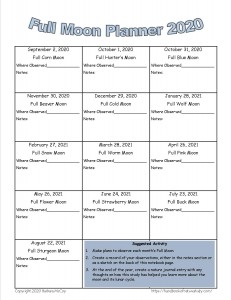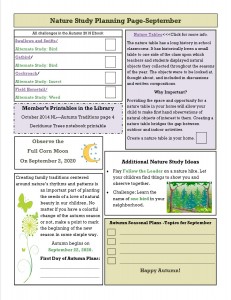There is something magical about a full moon that catches everyone’s attention. Although the moon is technically always “full”, it’s how we see it as to what name we give it. If we were to fly into space, the moon would be full. Yet on earth, it might appear as a lovely sliver, and so we call it a crescent. It’s not really the moon that changes shape but our view of it.
Moon Gazing Activities for Your Homeschool Nature Study
Moon gazing can be a fun activity for all ages. Students can track what time the moon rises, where it is spotted in the sky (north, south, east, or west), how full it looks (phases), and even what color it first shines.
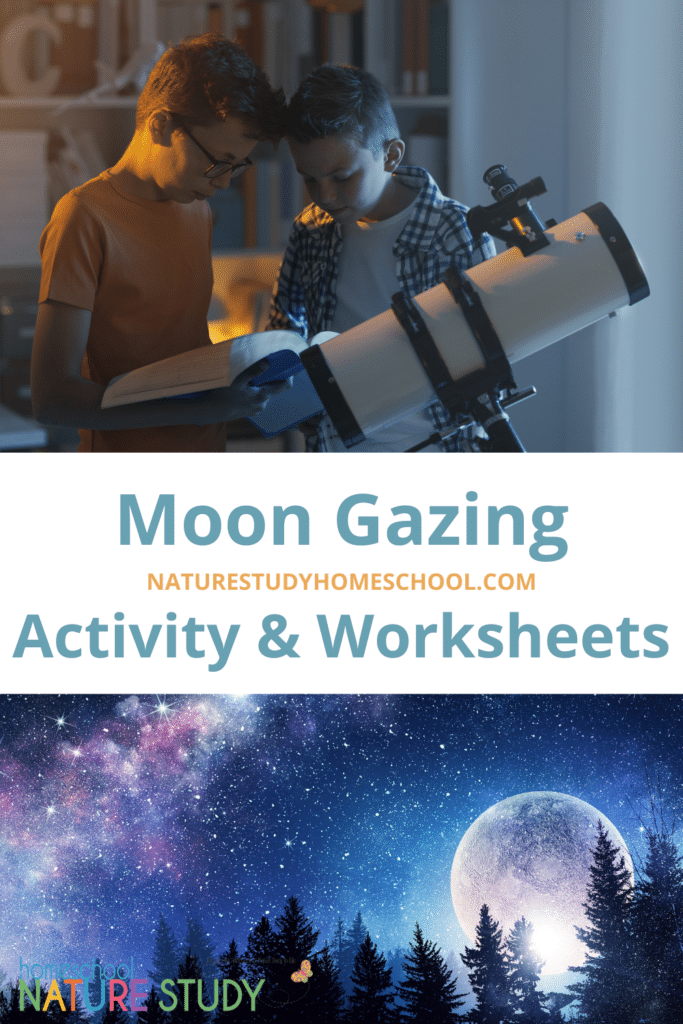
Not sure of each moon phase? It’s easy to confuse a waxing gibbous from a waning gibbous. NASA’s website offers a detailed explanation of the moon’s phases, plus great photos of the moon!
Homeschool Nature Study Members can print the Oreo Moon Phases Worksheet from your dashboard and the new Moon Gazing Activity Sheet.
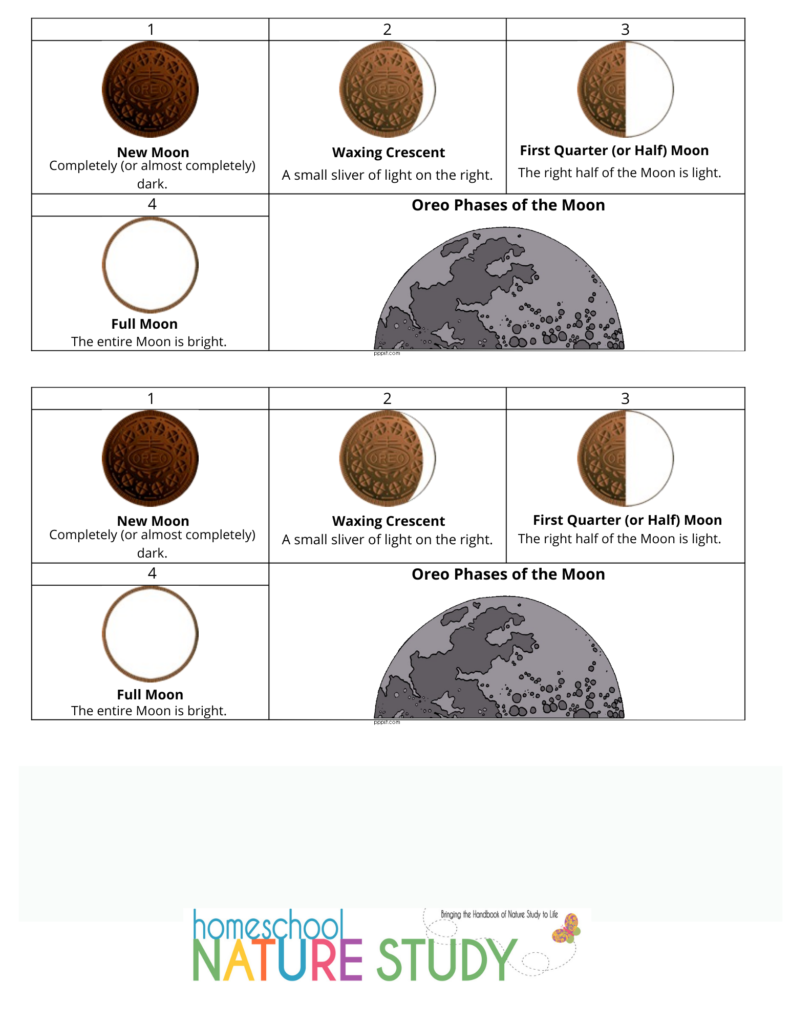
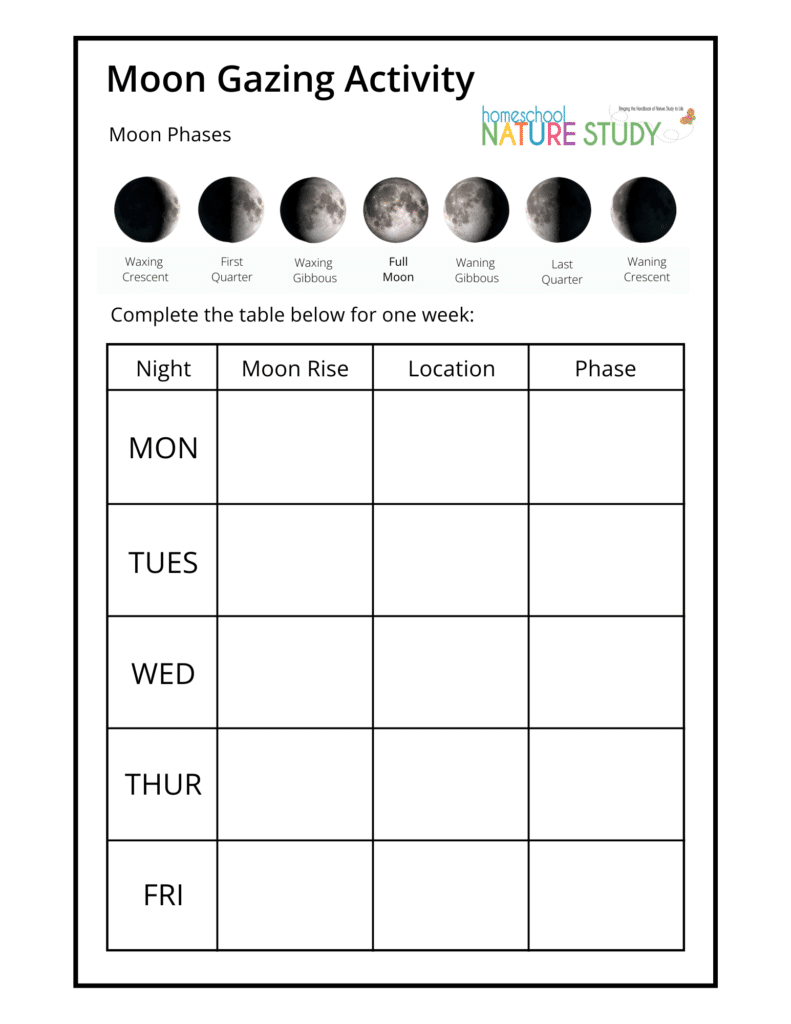
Ways to Observe the Moon
Some nights the moon feels like it’s about to crash into the front yard, unwilling to be missed. Other nights, it’s not as easy to spot. Here are a few ways to observe the moon, other than looking up.
* Binoculars. As much as I love the kid-friendly unbreakable binoculars, they’re not really great at magnifying. Look for something with at least 7x magnification.
* Telescope. Be sure to use this on any other night besides the full moon. The brightness of the full moon washes everything out and is just too bright for the telescope.
* Apps – try SkySafari or Night Sky. Look for the free trial versions!
* NASA. Go to the source of the original info. Both their website as well as their app.
* Observatory & Planetariums. Google “observatory near me”. Take a field trip to learn about the moon.
Learn The Full Moon Names
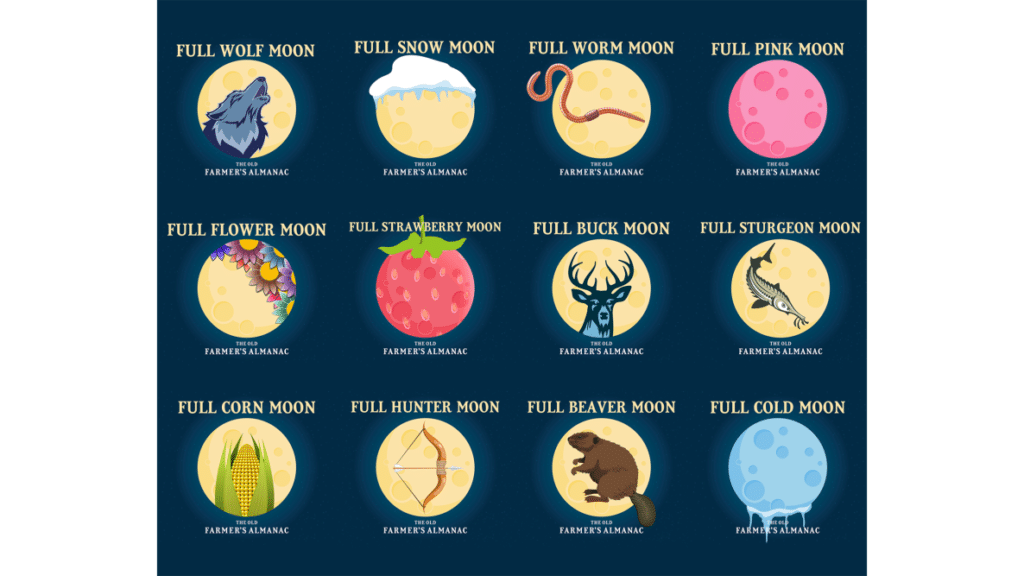
The Farmer’s Almanac created this image and their website shares the “why” behind each name. Plus alternative names for each month. Many of the names are the English translation of the Native American names.

Study The Night Sky Ideas + Journal Page
Take some time this next week to get outside at night and enjoy a beautiful night sky homeschool nature study. Allow plenty of time for your eyes to adjust to the darkness and just enjoy gazing up at the heavens. Use some of these suggestions to get started with some simple night sky observations.
Paint the Moon – Homeschool Art Lesson
We always love to add art to our science lessons. Chalk Pastel Art created a Homeschool Moon Unit Study that is well .. out of this world! Head on over to check it out because You Are An Artist!
Homeschool Nature Study Membership
It’s a great time to join Homeschool Nature Study! We offer a multitude of science activities, hands-on learning ideas, seasonal nature studies, crafts, free resources for all ages – join the #outdoorhourchallenge community and enhance your homeschool science lessons!

Stef started homeschooling her boys in 2008. She quickly adopted a hands-on learning homeschool style and graduated her oldest tactile learner in 2021. Stef started the Hands-On Learning column in Homeschooling Today magazine. The Laytons currently reside in the foothills of Colorado where Stef also teaches yoga. The family loves to hike trails, stand-up paddle board, and chase sunsets. Stef shares travel and homeschool tips on IG at @LaytonAdventures.

